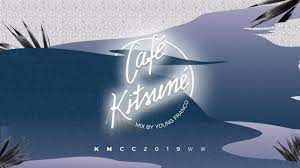Copywriting is an essential skill for any business, and if kitsûe you’re just starting out, you may find it difficult to come up with effective marketing materials. In this guide, we’ll teach you the basics of creating kitsûe, or Japanese marketing materials. We’ll provide tips on formatting and designing your materials, as well as advice on how to create content that resonates with your target audience. By following these steps, you’ll be well on your way to becoming a successful copywriter in Japan!
What is Kitsune?
Kitsune is a fox spirit who is known for wisdom, cunning, and the ability to change appearance at will. Kitsune is also associate with the moon and often depicted as a beautiful woman with long, silver hair. In Japan, kitsunes are worshipe as gods or goddesses.
Making kitsûe is a fun way to learn about Japanese culture and mythology. It’s also a great way to connect with nature. This guide will teach you how to make kitsûe from scratch. If you’re new to crafting, this is an excellent introduction to Japanese folk art.
What You’ll Need:
– Fox fur (available at most craft stores)
– White paint or fabric paint
– Brushes
– Cotton balls
– Glycerin or beeswax (optional)
– Jar or container with a lid
– Glass or ceramic bowl (optional)
How to Make Kitsune: Materials and Tools
Kitsune are a type of fox spirit that are often depicte in Japanese art and culture. They are know for their cunning, intelligence, and skills in magic. If you’re looking to make your own kitsune figurine ornaments, this guide will teach you how to do it!
The first thing you’ll need is some materials: a fox body form, wire, various colors of yarn, scissors, needle, hot glue Gun and glue sticks.
To make the body form, you’ll need to cut out a shape from foam or cardboard. You can then use the scissors to cut out the fur around the fox’s head and body. You may also want to add whiskers and ears if desired. Once you have the basic shape ready, you can then use the wire to create the wires for the body form. If you’re using foam or cardboard, be sure to heat up the ends of the wire before attaching them so that they don’t start to melt.
Once the wires are attache, you can then start filling in the fur with hot glue. Be sure to fill in all of the creases and recesses so that your fox looks realistic! Once everything is glued in
Steps in Making Kitsune: Preparation
There are a few things that you will need to get started in making kitsune: paper, scissors, pen, and a image of a fox. The first step is to cut out your fox image. Next, use the pen to sketch out the outlines of the fox’s body. Finally, cut out the fox from the paper. You now have your first kitune!
Next, you will need some rice flour. To make the body of the kitune, take about 1/4 cup of rice flour and put it into a small bowl. Add about 1/4 cup of water and mix together until a dough forms. Press the dough into a round shape and then use a sharp knife to cut out circles. You can either fry these circles in oil or bake them in an oven at 350 degrees Fahrenheit for about 10 minutes.
Now that you have your kitunes ready, it is time to add some detailing to them. For the eyes, take some black eye pencils and draw two circles on top of each kitune’s head. Use a light brush to fill in the circles with black ink. For the mouth, take some white paint and draw two curved lines on either side of the
How to Make Kitsune: Finishing
Kitsune is one of Japan’s most popular and well-known yōkai, or supernatural creatures. Kitsune are foxes, but they have the ability to transform into women, often with magical powers. In this article, we will be teaching you how to make a kitsune mask using simple materials and steps. If you are interested in learning more about this yōkai and its folklore, be sure to check out our other articles on the subject.
Materials:
-One white mask (or any other light-colored mask)
-One brown fabric piece
-Scissors
-Glue
-Brown thread
Step 1: Cut out the white mask using scissors. The mask should fit comfortably over your head, with no excess material around the edges or face. The eyebrows, eyeholes, and mouth should all be accurate, but the rest of the mask can be slightly altered to your own specifications.
Step 2: Fuse the brown fabric piece onto one side of the white mask using glue. Make sure that the fabric is positioned so that it covers both sides of the white mask, except for the opening for your nose and mouth. Use brown
